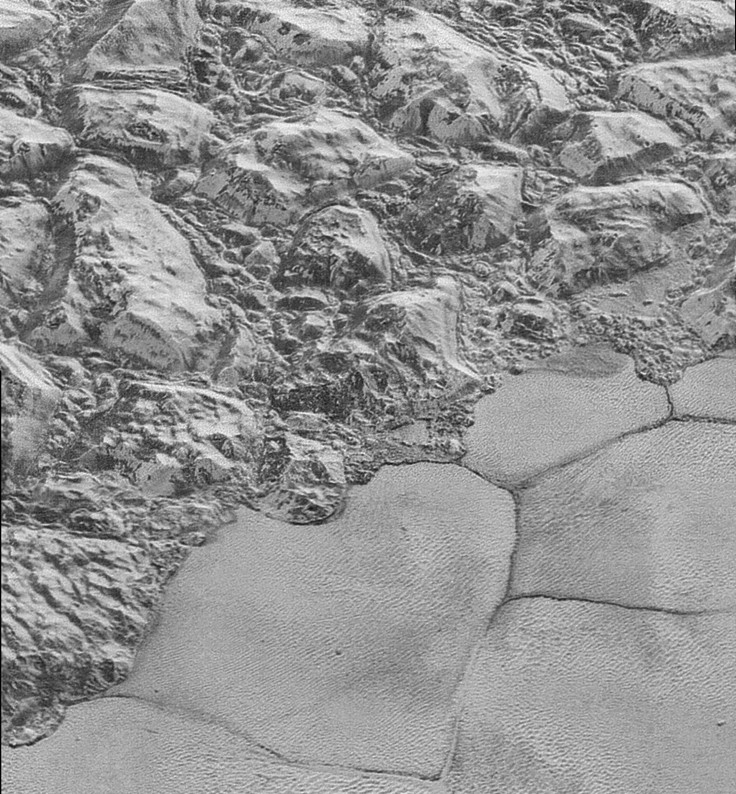Pluto Has Dunes Made Of Methane Ice, NASA’s New Horizons Data Shows
Pluto got taken off the list of the solar system’s planets a few years ago, but that does not make it any less of an interesting body for astronomers to study. And scientists sifting through data gathered by NASA’s New Horizons spacecraft have now found the dwarf planet is home to surface dunes, made of methane.
Other than Earth, dunes are known to form on several other terrestrial bodies in the solar system, including Mars and Venus, Saturn’s largest moon Titan, as well as on the comet 67P. Unlike the sand dunes on Earth, though, these formations on Pluto are made up solid methane, or grains of methane ice. Based on the data that New Horizons captured during its 2015 flyby of Pluto, scientists surmised the methane grains are released into the dwarf planet’s thin and rarefied atmosphere when solid nitrogen gets converted directly into gas (a process called sublimation).
A detailed look at images of Pluto showed researchers the methane dunes spread across an area that forms the boundary between the icy plain called Sputnik Planitia (one of the largest features on Pluto) and a major mountain range that lies next to it. The area where the dunes are is about 75 kilometers (47 miles) across.
“We knew that every solar system body with an atmosphere and a solid rocky surface has dunes on it, but we didn't know what we'd find on Pluto. It turns out that even though there is so little atmosphere, and the surface temperature is around -230 degrees Celsius, we still get dunes forming. The New Horizons data has given us a new level of detail, but we had to work hard to explain how it was possible to get the supply of sediment, a non-cohesive surface and wind you need for dunes,” Matt Telfer, from the University of Plymouth in the United Kingdom and lead author of the paper describing the formations, said in a statement Thursday.

The dunes were seen as hundreds of ridges in New Horizons’ images, appearing parallel to the mountain range in the western portion of the plain, but changing orientation and becoming spread out as they moved eastward. Wind streaks, six in all, were also seen in the images, and they showed a similar pattern to the ridges. The dunes likely formed in the last 500,000 years, maybe a lot more recently.
The methane grains that make up the dune likely come from the mountain range, but they could also be nitrogen ice instead, according to the authors of the study. Even as the winds on Pluto reach maximum speeds of 30 to 40 kilometers an hour, they are sufficient, given the low surface pressure (100,000 times less than Earth) and weak gravity, for the dunes to form.
Simply titled “Dunes on Pluto,” the paper appeared online Thursday in the journal Science. An additional perspective was published too, titled “Dunes across the solar system.”
© Copyright IBTimes 2024. All rights reserved.











